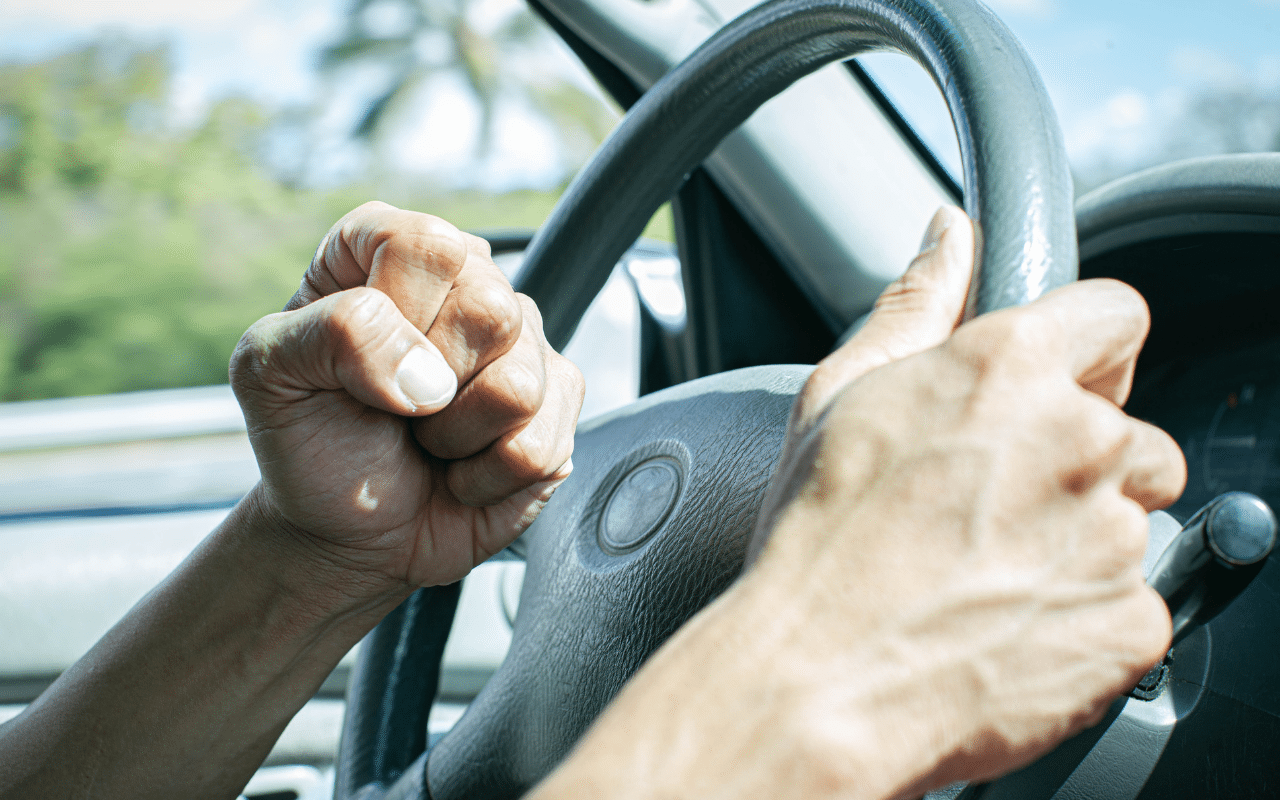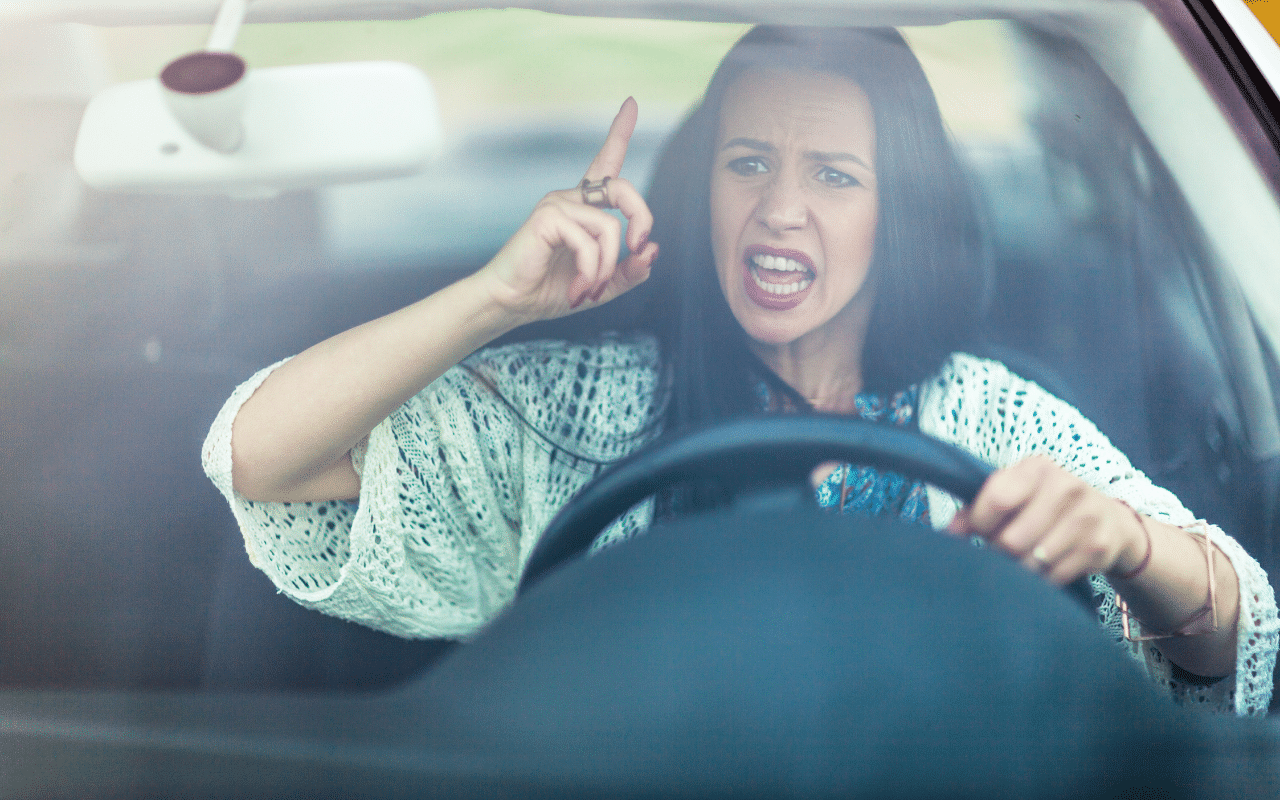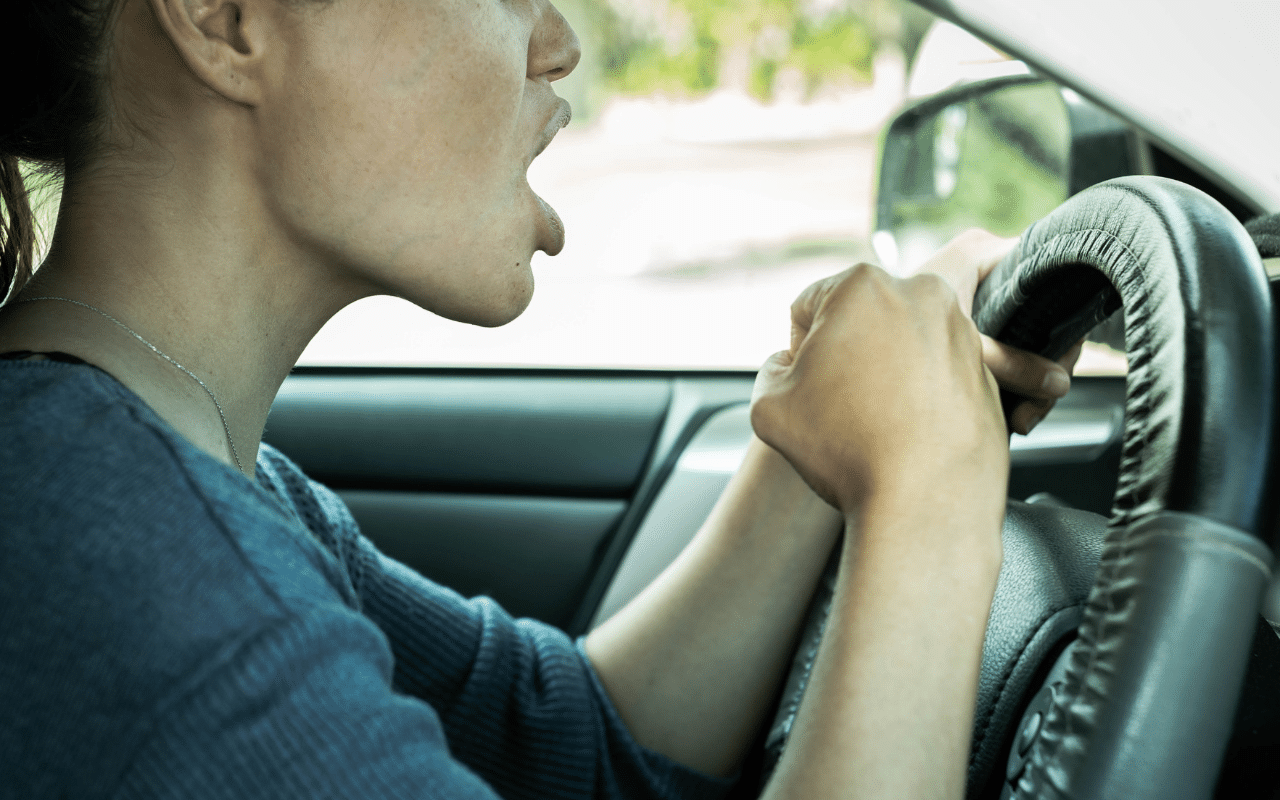Road rage has become an increasingly common issue on our roads, threatening the safety of all drivers. Longer commutes and the frustrations this causes can contribute to aggressive driving behaviours that put lives at risk. Let’s talk about what it means, what causes it, how it affects safety on the road, and how to stop it.
What is Road Rage?

Road rage refers to violent or aggressive behaviour exhibited by drivers due to frustration or anger while behind the wheel. It often begins with a simple irritation and escalates into aggressive acts such as tailgating, shouting, or even physical confrontations. This form of driving rage can arise from something as minor as being cut off in traffic, slow drivers, or other perceived wrongs.
While it is often associated with physical aggression, it can also manifest in other ways, such as flashing lights, honking horns excessively, and making threatening gestures. It is a dangerous practice that affects not only the aggressive driver but also other road users, including pedestrians and cyclists.
What Can Cause Road Rage?

Several factors can contribute to road rage, varying from driver to driver. Here are some of the most common causes:
- Traffic Congestion: One of the most significant triggers for road rage is being stuck in heavy traffic. Long waits, stop-and-go driving, and the frustration of not reaching a destination on time can fuel aggressive behaviour.
- Personal Stress: Stress from everyday life, such as work pressure, financial problems, or personal issues, can lead to road rage. Drivers already stressed or anxious may find themselves easily irritated or triggered when driving.
- Perceived Injustice: Many drivers take minor traffic violations personally. Whether it’s someone cutting them off, failing to use their turn signal, or driving too slowly, these incidents can lead to a sense of personal insult that fuels rage.
- Running Late: Stress levels can rise when people are pressed for time, making drivers more impatient and more likely to do dangerous or aggressive things while driving.
- Cultural and Regional Norms: In some regions, aggressive driving is more common due to cultural norms. Drivers used to competitive or fast-paced environments may be more prone to driving rage when others don’t meet their expectations.
- Anonymity: Drivers often feel more empowered to act aggressively while driving because they think they are anonymous inside their vehicles. This anonymity can reduce the sense of accountability for one’s actions.
What is the Meaning of Driving Rage?

Driving rage is an extreme emotional response that leads to aggressive behaviour on the road. It involves an intense feeling of anger that perceived threats or inconveniences can trigger, leading the driver to retaliate. This retaliation may come in the form of dangerous driving practices, verbal abuse, or even physical altercations.
At its core, driving rage, or road rage, is an impulsive reaction to stress or frustration. It is important to note that driving rage is different from merely being frustrated while driving—it represents a complete loss of control and judgment, which is why it is so dangerous.
Is Driving Rage Aggressive Driving?

Road rage is a terrible form of violent driving, but it is a type of driving that happens a lot. Speeding, following too closely, weaving in and out of lines, and running red lights are all examples of aggressive driving. Driving rage adds violent or retaliatory behaviour to these actions, making them worse.
The driver’s intention often makes the difference between reckless driving and driving rage. Aggressive drivers may be anxious or want to get ahead in traffic, but drivers who are angry on the road want to hurt or scare other people on the road.
The Impact of Road Rage on Road Safety

Road rage can have severe consequences for road safety, leading to accidents, injuries, and even fatalities. Here are some ways in which road rage can negatively impact road safety:
- Increased Accident Risk: Aggressive driving habits like speeding, following too closely, and weaving between lanes make crashes more likely. Most of the time, drivers are less likely to make safe choices when angry.
- Escalation of Violence: Road rage can lead to physical confrontations between drivers. These situations can get worse very quickly, hurting or even killing people.
- Distracted Driving: Drivers experiencing road rage are often so consumed by their anger that they become distracted. This reduces their ability to focus on the road, increasing the chances of an accident.
- Endangering Innocent Road Users: Road rage doesn’t just affect the driver and their target—it can also put other innocent drivers, pedestrians, and cyclists in danger. Erratic driving can lead to accidents involving multiple vehicles. Some may not even have been involved in the initial conflict.
How to Prevent Road Rage
Preventing driving rage is essential for maintaining safety on the roads. Here are some effective strategies to reduce aggressive driving behaviours and promote a safer driving environment:
- Practice Patience: Learning to be patient is critical to preventing road rage. This means accepting traffic delays, other drivers’ mistakes and other frustrations as part of driving. Keeping a calm mindset and understanding that getting angry won’t change the situation can help prevent road rage.
- Plan Your Route: Plan your route ahead of time and give yourself extra time to get there to avoid stress and being late. With GPS or traffic apps, you can avoid areas with a lot of traffic and congestion and make your trip less stressful.
- Keep a Safe Distance: Tailgating is one of the leading causes of road rage incidents. Keeping a safe distance between your car and the one in front of you can help clear any confusion and give you time to respond to quick traffic stops or changes.
- Use Signals and Drive Courteously: Simple gestures like using your turn signals and acknowledging other drivers with a wave can help create a more positive driving environment. Small acts of courtesy can prevent misunderstandings that may escalate into road rage.
- Avoid making eye contact with aggressive drivers: If you encounter an aggressive driver, do not encourage them or get involved. Getting more involved will only make things worse. Don’t worry, and pay attention to driving safely.
- Take Deep Breaths: If you feel angry while driving, take deep breaths and remind yourself to stay calm. Anger can impair judgment, so managing your emotions before they escalate is essential.
- Use Traffic-Calming Measures: Traffic-calming measures, like speed humps, can be incredibly effective in reducing speeding and aggressive driving behaviours. We at Speed Humps Australia are dedicated to promoting road safety through the installation of speed humps, which encourage drivers to slow down and drive more safely. Speed humps act as a physical reminder for drivers to control their speed and maintain safe driving habits, reducing the likelihood of road rage incidents.
- Report Aggressive Drivers: If you see an angry driver on the road, inform the police. You can report dangerous driving by calling the non-emergency police line. This helps keep other cars safe.
Creating Safer Roads Together
Road rage is a serious problem that can significantly impact road safety. From causing accidents to escalating violent confrontations, the consequences of driving rage can be severe. However, we can make the roads safer by learning what causes road rage and taking steps to stop it.
We at Speed Humps Australia are committed to promoting safer driving behaviours through traffic-calming measures like speed humps. To make our roads safer for everyone, we can help lower the risk of road rage by telling drivers to slow down and be more careful.
Learn more about road safety here










